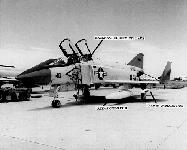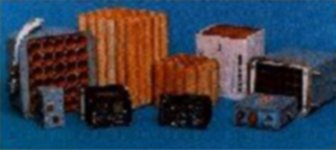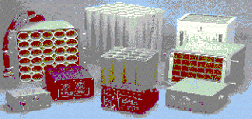




 The AN/ALE-47 Counter Measures Dispenser System provides an integrated, reprogrammable, computer controlled system to dispense expendables/decoys to enhance aircraft survivability. The ALE-47 Countermeasure Dispenser System is an integrated, reprogrammable, computer controlled system to dispense expendables/decoys, designed to employ electronic and infrared countermeasures according to a program developed and implemented by the aircrew. ALE-47 provides the aircrew with a "smart� countermeasures dispensing system, allowing the aircrew to optimize the countermeasures employed against anti-aircraft threats. The ALE-47 system is an upgraded version of the ALE-40, which is more automatic and is programmable to better enhance its capabilities depending on aircraft mission.
The AN/ALE-47 Counter Measures Dispenser System provides an integrated, reprogrammable, computer controlled system to dispense expendables/decoys to enhance aircraft survivability. The ALE-47 Countermeasure Dispenser System is an integrated, reprogrammable, computer controlled system to dispense expendables/decoys, designed to employ electronic and infrared countermeasures according to a program developed and implemented by the aircrew. ALE-47 provides the aircrew with a "smart� countermeasures dispensing system, allowing the aircrew to optimize the countermeasures employed against anti-aircraft threats. The ALE-47 system is an upgraded version of the ALE-40, which is more automatic and is programmable to better enhance its capabilities depending on aircraft mission.
This continuing joint program, with an Air Force lead, is in full-rate production by Tracor, Austin, TX. The AN/ALE-47 program is managed at the Aeronautical Systems Center (ASC/LN). The Navy will acquire 520 systems from FY 1998 to FY 2003.
Acquisition streamlining initiatives have included:The CCU-136A/A impulse cartridge is a new expendable countermeasure impulse cartridge that is not susceptible to premature ignition or reduced reliability by the Electromagnetic Environment (EME) aboard ships. The CCU-136A/A incorporates Hazard from Electromagnetic Radiation to Ordnance (HERO) Safe features. All prior Airborne Expendable Countermeasure (ABN EXP C/M) impulse cartridges are HERO susceptible. The CCU-0136A/A impulse cartridge provides a near complete faraday cage around the firing circuit and a low-pass Radio-Frequency (RF) filter to eliminate HERO threats from EM radiation and RF energy passed along the DC firing circuit from the aircraft systems. HERO testing has been completed and resulted in a HERO Safe rating of the CCU-136A/A impulse cartridge in the AN/ALE-39 and AN/ALE-47 countermeasure dispenser systems. The CCU-136A/A has the same ballistic/ functional characteristics as that of the CCU-136/A and will replace CCU-41/B, CCU-63/B, CCU-136/A impulse cartridges. The CCU-136A/A will be used to dispense all current and future ABN EXP C/M, which are round form factor and the Fiber Optic Towed Decoy (FOTD).
The AN/ALE-47 Countermeasures Dispenser System (CMDS) is a joint program led by the U.S. Air Force. The AN/ALE-47 was developed as a replacement to the AN/ALE-39 CMDS but until now funding to retrofit all Navy aircraft has not been a priority. The ALE-47 Retrofit is funded to begin in FY00. This initiative is based on Safety and Cost Reduction. The ALE-39 has recorded 141 Things Falling Off Aircraft (TFOA) incidents over the last 10 years and cost per flight hour for the ALE-39 is more than 3 � times the cost of operating the ALE-47. Further, the ALE-47 reliability and maintainability are vastly improved over the ALE-39, which increases aircraft readiness. The retrofit of over 1375 systems will begin with the F-14B/D, EA-6B, and F/A-18C/D lots 12-17. Unfortunately, due to available budget the retrofit of Assault and Transport vehicles remains outside the bounds of the current FYDP. ALE-47 retrofit challenges for the next century are many. They begin with the requirement to complete this effort as a B-Kit only change while maintaining all current interfaces and functionality with other on-board systems, such as the BOL chaff dispenser on the F-14. The limited and unreliable ALE-39 operation is entrenched in the operator�s mindset. Accepting the reliability of the ALE-47 to dispense what you want, when you want it and thus building confidence in the ALE-47 system will also remain a challenge. Finally, the ALE-47�s "smart dispensing" capability must be fully exploited. Use of the ALE-47 smart dispensing capability not only gets the most bang for the buck, but moreover, smart dispensing will gain maximum survivability for the aircrew.

